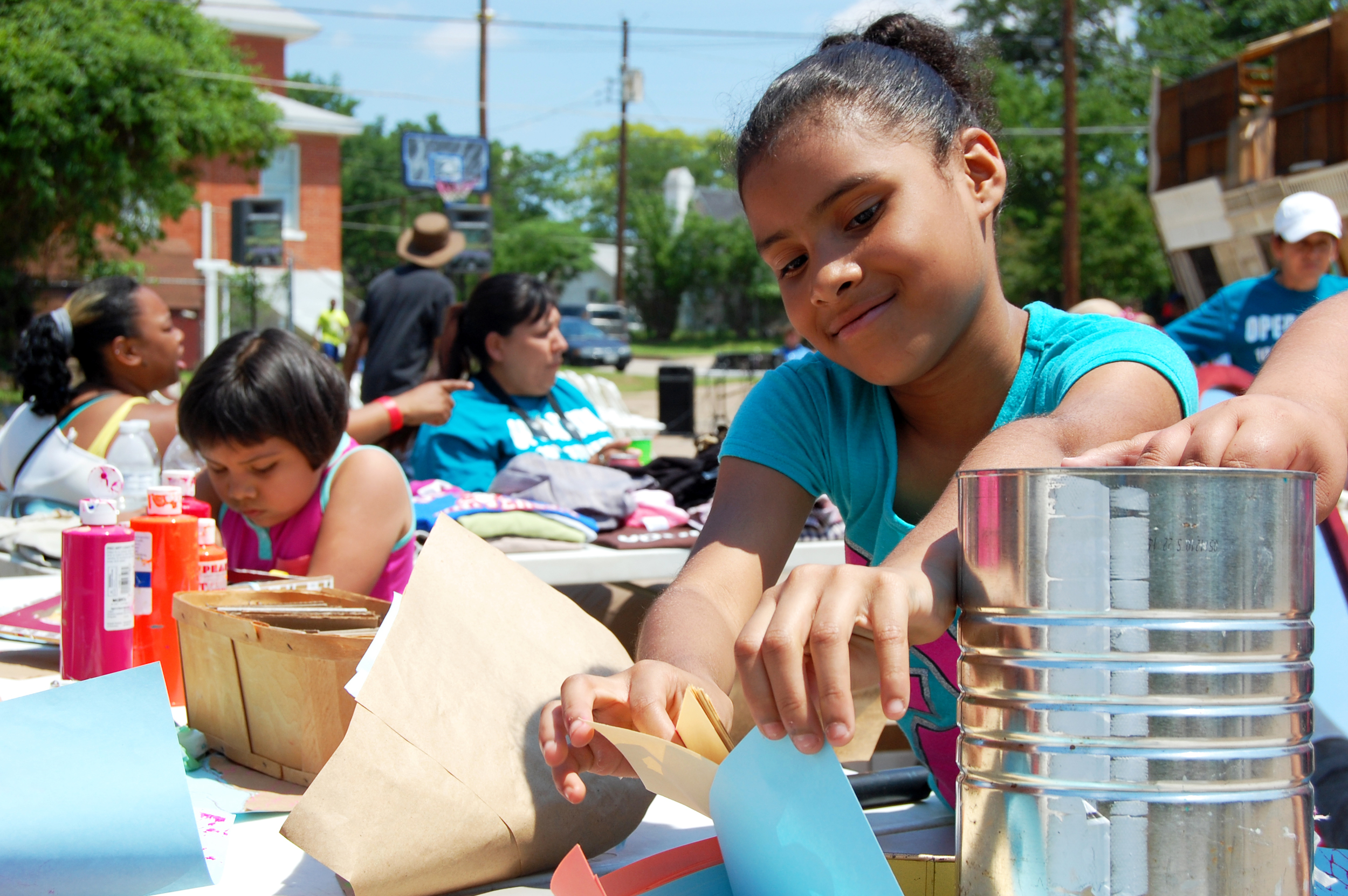Learn more about Activating Vacancy.
Last year, as part of our Activating Vacancy initiative, artist Christopher Blay and [bc] collaborated with the Tenth Street Historic District community to produce the Ark on Noah Street. The Ark is a sculpture, a gallery, a museum and a symbol. When Christopher Blay created the concept of the Ark, a fundamental facet of the project was that it be reproduced yearly to keep art and culture active in the Tenth Street Historic District and to create an opportunity to celebrate, share and reflect on the neighborhood's history and the changes of the year.
On May 2, 2015, the Ark was again commemorated during the Second Annual Ark Festival, a gathering of the Dallas arts community and the Tenth Street Historic District that was even bigger and better than before! The festival featured a processional of residents with original artwork depicting the neighborhood's history and its growth since the Ark was last seen, a performance of the original Story Corners play "A Freeman Cries for the Future," a visit from the Dallas Zoo, and the return of the Neighborhood Stories: Tenth Street exhibit. There was also a small marketplace for neighbors and arts activities led by Oil and Cotton.
The Tenth Street Historic District is one of Dallas’ oldest neighborhoods and one of its few remaining freedmen’s towns, communities built by freed slaves following the Civil War. Despite being designated a landmark district by the City of Dallas in 1993 and being listed on the National Register of Historic Places in 1994, the neighborhood has lost population and housing stock at a rapid pace. It has also experienced a growth in crime and a deteriorating public image. In response to these challenges, [bc] initiated Activating Vacancy to encourage residents to reshape the vacancy in their neighborhood from blight to opportunity through a series of public art activities, beginning with the Ark on Noah Street.
Activating Vacancy existed at a nexus of creative placemaking, public art and community organizing. Inspired by similar initiatives such as the Heidelberg Project in Detroit and Project Row Houses in Houston, Activating Vacancy sought to set in motion the revitalization of an important historic community, provide commentary regarding an array of urban issues such as vacancy and historic preservation and encourage a democratization of exceptional art in Dallas in terms of audiences, geographies and producers. The Ark on Noah Street was an excellent first step towards achieving these goals. The Ark as a gallery featured artwork produced by neighborhood residents. The Ark as a sculpture artfully repurposed discarded materials from Tenth Street's historic homes into a monument and testament to its history. The Ark as a festival brought neighbors, artists, critics and art consumers together to meet each other, rediscover an often forgotten part of Dallas and imagine a city where any neighborhood can be recognized as a source of valuable cultural producers.
At the Second Annual Ark Festival, it was made clear that the Tenth Street Historic District still faces tremendous challenges. Homes have been repaired, while others have been demolished. Crime is tempered, but it persists. There is also evidence of renewed action in the neighborhood: dozens of attendees wore Operation Tenth Street t-shirts, representing a new, forward-thinking neighborhood organization that has secured grant funding for neighborhood improvement projects. The Greater El Bethel Missionary Baptist Church has been repaired and again opens its doors to song and prayer on Sunday morning. And, the Ark has been rebuilt, fuller and more refined than its previous iteration.
In addition to the above challenges, there are a bevy of questions that have yet to be answered about the neighborhood that will help illuminate how sustainable its recent burst of energy is. Will Tenth Street be able to continue its revitalization with reduced non-profit activity? What will it take for Tenth Street to develop market interest in rebuilding its historic ground? Have recent efforts sufficiently demonstrated the neighborhood's value to the city at large to insist on its survival, whether through ongoing preservation efforts or through continued nurturing of its unique identity and role as cultural producer? Perhaps some of these questions will be answered and shared at the Third Ark Festival.
![[bc]](http://images.squarespace-cdn.com/content/v1/5248ebd5e4b0240948a6ceff/1412268209242-TTW0GOFNZPDW9PV7QFXD/bcW_square+big.jpg?format=1000w)









